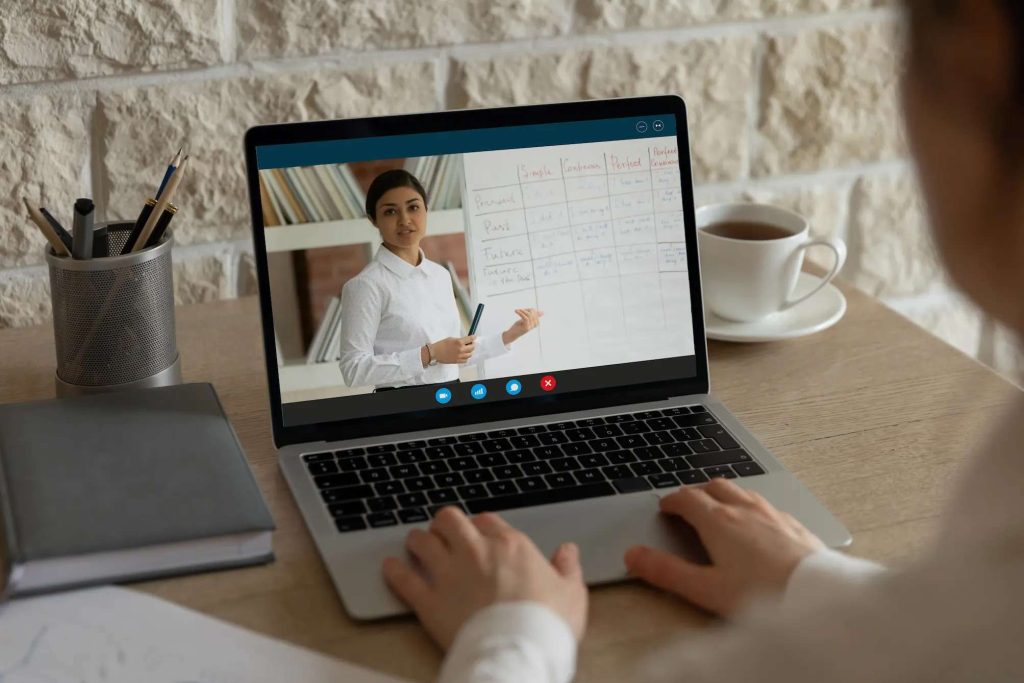Reading time : 3min
Choosing between e-learning and presentation training in the animal health sector
Wondering about the relevance of e-learning or presentation training for your project? Both forms of learning have advantages and disadvantages. However, the real trend is something called blended learning.
What is blended learning? It is a powerful form of learning that uses synergy between e-learning and face-to-face training. Blended learning boosts your training and makes it both effective and useful for your learners!
Using blended learning in Animal Health training
Why do we blend e-learning and face-to-face training? Blended learning is a mixed mode of learning that is still relatively unused in the animal health sector. Too often, the content in the presentation is simply duplicated onto a Powerpoint presentation for example. The learning program then loses its effectiveness.
To offer a training program using blended learning, your learners can carry out theoretical learning remotely online, ahead of the face-to-face training. The face-to-face training can then take place in the form of interactive workshops and situations that will allow a concrete application of learning. We must also pay particular attention to the organisation of the modules within the training.
The two forms of learning are complementary. Their synergy increases the effectiveness of your training, where the learner benefits from both e-learning training and in-person training.

What are the benefits of e-learning training?
E-learning training gives a great flexibility, much more than that of face-to-face training. This form of learning allows you to address a large audience, simultaneously and even offline. The content can be customised, or adapted according to the learner’s own choices, sometimes even on a case-by-case basis. This allows you to stay as close as possible to the real needs of the learner or to advance on some of the aspects already acquired by some.
Learners are given access to a Learning Management System (LMS). Learners can ask their questions, for example, in the form of a forum.
E-learning makes it possible to have many animations and interactions that encourage the commitment of your learners. Therefore, the most important expense for your blended learning project is to be expected at the time of the development of the solution.
What are the benefits of in-person training?
In-person, or face-to-face training requires the trainer and group of learners to be all together at the same time in a given location. This form of learning is ideal for a small group of learners (approximately ten) and it gives the opportunity for the group to interact together. The trainer can sometimes adapt the content of the training to the audience, depending on their feelings or context.
Learners, on the other hand, appreciate the direct access to the presenter and the possibility of being able to interact with them live, or with other learners, through situations or question-and-answer sessions.
The highest expenses are to be expected at distribution – for example, paying or reimbursing travel expenses, or rental costs of a meeting room.


Go further with ‘reverse classes’
Blended learning is therefore the best approach to increase the effectiveness of your training. This model has been proven to be more effective than just presentation alone or just e-learning alone, providing it is well designed.
The next step – ‘reverse classes’ and participatory learning.
The design of the training program is no longer based on the trainer, but on the learner.. This method is based on the application of knowledge rather than on the transmission of concepts, which further increases the relevance and effectiveness of your training. The reverse class greatly improves the level of engagement of your learners.
Choosing between e-learning and blended learning will therefore depend on the size and type of your audience, your budget and the format you want to give to your training. Blended learning is an option we recommend to optimise your time and that of your learners and record the change in the long term.
Want to see some case studies? Contact our team of animal health specialists, who will accompany you to formulate your training strategy!
